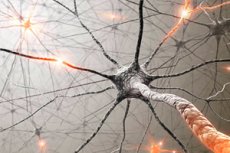Nye publikasjoner
Interaksjoner mellom fettvev og sympatiske nevroner bidrar til hjertearytmier
Sist anmeldt: 02.07.2025

Alt iLive-innhold blir gjennomgått med medisin eller faktisk kontrollert for å sikre så mye faktuell nøyaktighet som mulig.
Vi har strenge retningslinjer for innkjøp og kun kobling til anerkjente medieområder, akademiske forskningsinstitusjoner og, når det er mulig, medisinsk peer-evaluerte studier. Merk at tallene i parenteser ([1], [2], etc.) er klikkbare koblinger til disse studiene.
Hvis du føler at noe av innholdet vårt er unøyaktig, utdatert eller ellers tvilsomt, velg det og trykk Ctrl + Enter.

En nylig studie publisert i tidsskriftet Cell Reports Medicine fant en sammenheng mellom hyppigheten av apnéhendelser under REM-søvn (rapid eye movement) og graden av verbal hukommelsessvekkelse hos eldre voksne med risiko for å utvikle Alzheimers sykdom. Verbal hukommelse refererer til den kognitive evnen til å huske og gjenkalle informasjon presentert muntlig eller skriftlig, og er spesielt sårbar for Alzheimers sykdom.
En studie utført av en gruppe forskere fra Kina undersøkte de uavhengige koblingene mellom epikardialt fettvev og det sympatiske nervesystemet med hjertearytmi ved bruk av in vitro-samkultur av adipocytter, kardiomyocytter og sympatiske nevroner. De fant at fettvev-nervesystemaksen spiller en viktig rolle i arytmogenesen.
Unormaliteter i dannelsen og ledningen av elektriske impulser på grunn av elektriske eller strukturelle abnormiteter i hjertet kan føre til hjertearytmier. Disse abnormalitetene kan enten være genetiske eller relatert til ervervet hjertesykdom. Forskning har vist at sympatiske nevroner spiller en betydelig rolle i patogenesen til hjertearytmi. Aktivering av unormale elektriske kretser og forstyrrelser i ventrikulær repolarisering på grunn av upassende stimulering av det sympatiske nervesystemet har vært assosiert med ventrikkelflimmer og takykardi, atrieflimmer og til og med hjertedød.
Nyere studier har også vist at epikardialt fettvev er nært assosiert med forekomsten av atrieflimmer, ventrikkelflimmer og ventrikulær takykardi. I tillegg, fordi epikardialt fettvev ligger inntil myokardiet uten vev som skiller kontakten mellom dem, kan inflammatoriske cytokiner og adipokiner som skilles ut av epikardialt fettvev endre den elektriske og kardiale strukturen. Det er imidlertid fortsatt uklart om epikardialt fettvev og sympatiske nevroner samhandler og hvordan deres samhandling påvirker arytmogenesen.
Om studien I denne studien overvant forskerne begrensningene som følge av mangelen på egnede modeller for menneskelige sykdommer og vanskeligheten med å skaffe og utvide tilstrekkelige mengder hjerte-, nerve- og fettvev ved å generere kardiomyocytter, adipocytter og sympatiske nevroner in vitro fra stamceller og etablere samkulturmodeller for å studere interaksjonene mellom epikardialt fettvev og sympatiske nevroner og deres effekter på kardiomyocytter.
Plasmaprøver ble innhentet fra perifer vene og sinus koronar hos 53 deltakere, inkludert friske kontrollpersoner og pasienter med paroksysmal eller permanent atrieflimmer. Epikardialt fettvev ble også innhentet fra pasienter med permanent atrieflimmer som hadde gjennomgått åpen hjertekirurgi.
Humane pluripotente stamceller og induserte pluripotente stamceller avledet fra adipogene stamceller, humane embryonale stamceller og embryonale fibroblaster ble brukt til å etablere cellelinjer og kulturer. En sekvensiell induksjonsstrategi ble brukt for å oppnå sympatiske nevroner, hvor nevrale celler ble avledet fra humane pluripotente stamceller og deretter dyrket i differensieringsmedium.
Adipogene stamceller ble dyrket i adipocyttdifferensieringsmedium for å utføre adipocyttdifferensiering og generere epikardielt fettvev. Kvantitativ revers transkripsjonspolymerasekjedereaksjon (qRT-PCR) ble brukt til å måle uttrykket av hvite, brune og beige fettvevsmarkører. En todimensjonal monolagsdifferensieringsteknikk ble brukt til å generere kardiomyocytter fra humane pluripotente stamceller.
Resultater Resultatene viste at kardiomyocytter dyrket med epikardialt fettvev og sympatiske nevroner, men ikke med noen av dem, viste betydelige elektriske abnormiteter, en arytmisk fenotype og svekket kalsiumion (Ca2+)-signalering.
I tillegg viste studien at leptin som skilles ut av epikardialt fettvev kan aktivere frigjøringen av nevropeptid Y av sympatiske nevroner. Dette nevropeptidet binder seg til Y1-reseptoren på kardiomyocytter og forårsaker hjerterytmeforstyrrelser ved å påvirke aktiviteten til kalsium/kalmodulinavhengig proteinkinase II (CaMKII) og natrium (Na2+)/kalsium (Ca2+)-veksleren.
Konklusjon Samlet sett indikerte resultatene at interaksjoner mellom epikardialt fettvev og sympatiske nevroner fører til en arytmisk fenotype i kardiomyocytter. Studien viste at denne fenotypen er forårsaket av stimulering av sympatiske nevroner av leptin som skilles ut av adipocytter, noe som fører til frigjøring av nevropeptid Y. Dette nevropeptidet binder seg til Y1-reseptoren og påvirker aktiviteten til CaMKII og Na2+/Ca2+-veksleren, noe som forårsaker unormale hjerterytmer.
